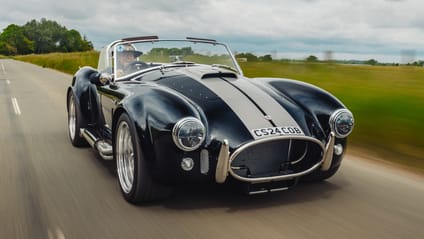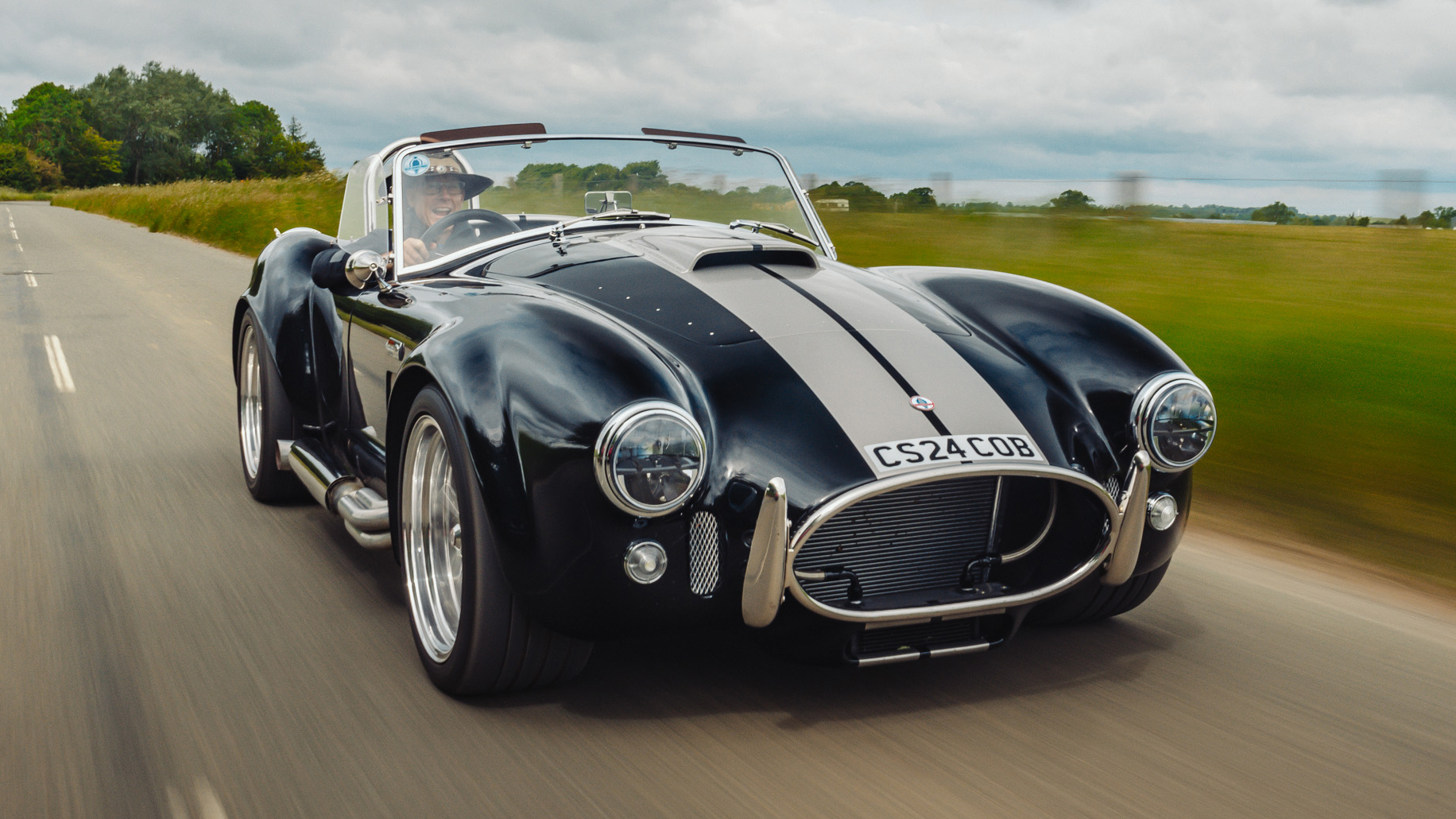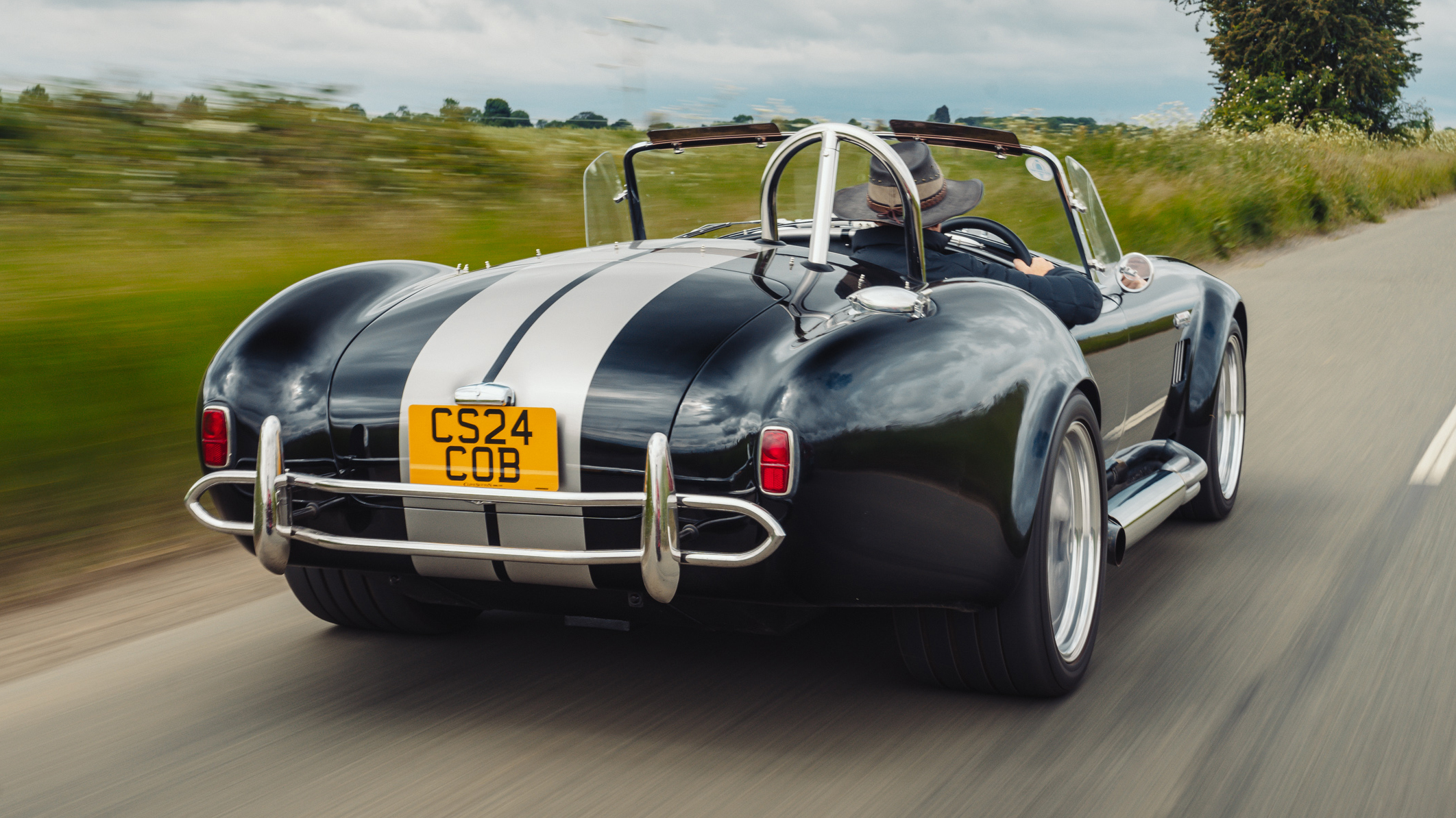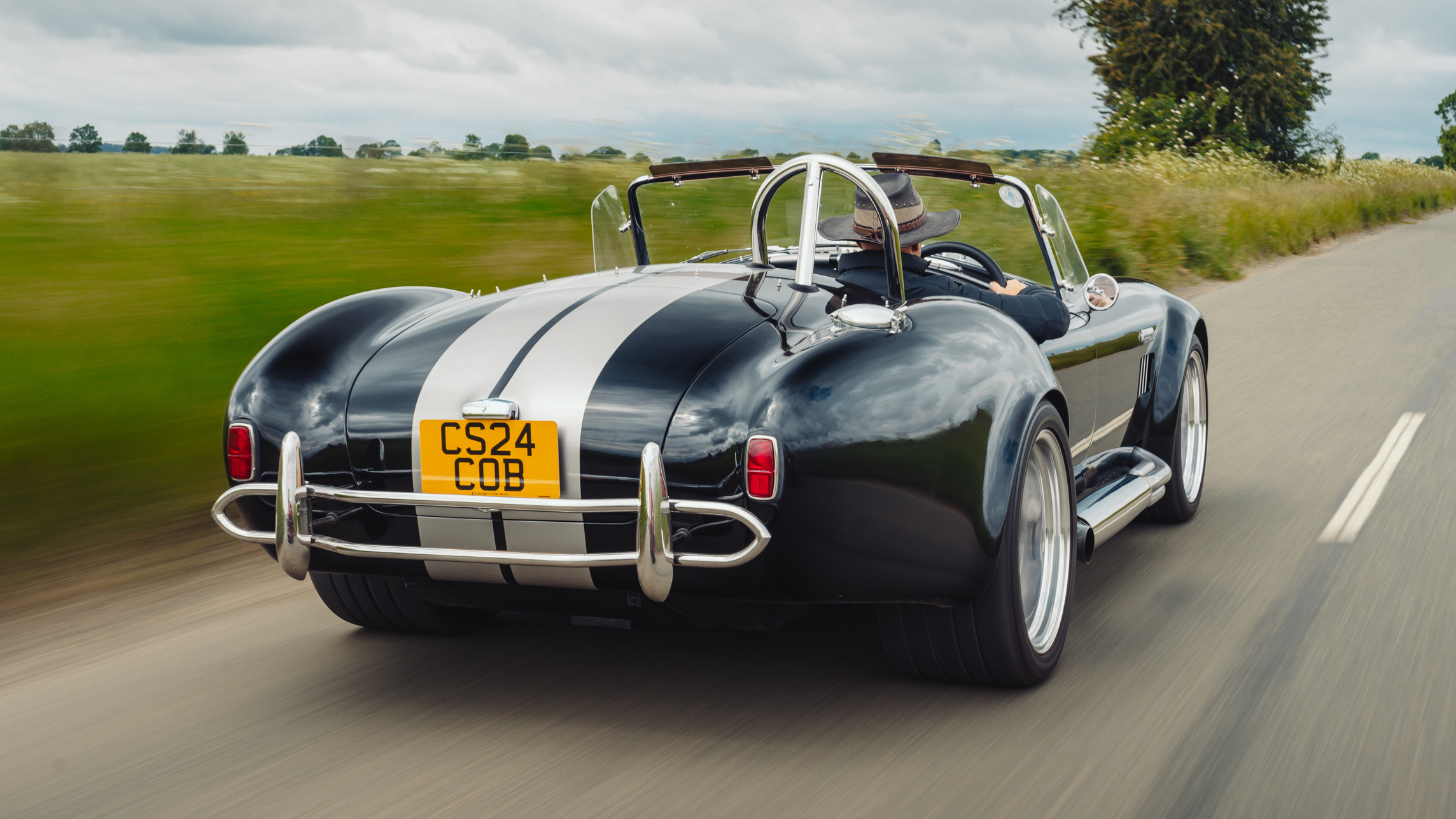
Shelby Cobra review
Good stuff
It’s all about the V8. Noise, drama, torque, force, plus that iconic bodywork and badge
Bad stuff
Still has some bad habits and they haven’t died yet
Overview
What is it?
I’ll tell you what it’s not – an original Shelby Cobra. You probably guessed this already from the wheels, 18s rather than 15s. But it’s close. It’s still a Shelby Cobra, but it’s now made under licence by Superformance, the only firm permitted to build reproductions and new Cobras.
They do two different versions: the MkIII and the Shelby Cobra CSX. The MkIII (the red car in the pictures) is slightly more illegitimate, employing a box section ladder frame chassis, while the CSX (the black car) features the same four-inch round tube construction as the original. That one gets to use a continuation of the original CSX chassis numbers, too. The latest one is the CSX 10000: think of it as a tenth generation Cobra.
What’s the history here?
It’s a can of worms, but it goes something like this. Carroll Shelby was a successful racing driver in the mid-1950s. Hillclimbs, Bonneville, a couple of seasons in F1 and victory at Le Mans in 1959 driving an Aston Martin DBR1. Legend has it that during the race he was struck by the speed of the AC Ace. A couple of years later, having retired from racing but wanting to build a race car of his own, he called AC and ordered an Ace, but with the steering box moved so the engine bay could accommodate a Ford V8. The chassis was sent from England, the engine (a Ford Windsor 221) from Detroit, and the first Cobra was created. It took just eight hours to build.
It, and the evolved Cobras that followed, were never particularly successful (racing at Sebring in 1964, driver Ken Miles nicknamed it ‘The Turd’), but that didn’t stop Carroll Shelby taking it ever further. The MkIII, with thicker diameter tubing and the 427 cubic inch (7.0-litre) Ford V8 was coil sprung all round, but missed homologation for the 1965 season. Intending to build 100 cars (the minimum number necessary), but only building 56, Shelby ended up detuning 31 for road use, wearing the S/C tag – semi-competition.
Bet those are worth a pretty penny now.
Yeah, these originals are well into the millions now. But the shape and layout is so iconic that it epitomises what we think of as a raw roadster. Those originals are what the new MkIII references with its side exit pipes, single-roll hoop and ‘quick jack’ bars at either end. Under the hood sits a Roush-tuned Ford 427 sucking air through a Holley 4-barrel carb and blowing power past a five-speed manual to a rear axle containing a limited slip diff and absolutely nothing electronic to mitigate mistakes. It develops 520bhp and 515lb ft of torque at 3,700rpm – even more than the 485bhp it had back in the day. The Ferrari 365 GTB4 ‘Daytona’ had over 130bhp less.
The Cobra’s fame never came as a racing car. Instead, for 20 years, from 1965 until the Porsche 959 arrived, this was the world’s fastest accelerating road car. 0-60mph in four seconds, 100mph in, well, it’s all a bit lost in myth and legend, but somewhere in the nine-second range, the quarter mile in 12. Carroll Shelby used to tape a $100 bill to the dash on test drives and tell punters they could have it if they could grab it.
What’s the other version?
The CSX 10000 uses a modern engine, Ford’s 5.0-litre Coyote V8. Yes it’s smaller, but it’s more fuel efficient than the 427, more reliable and makes just as good a noise, a neolithic bassline as much felt as heard, that takes on a proper race car bark at high revs. We’d never thought that much of the Coyote V8 until we drove it in a Cobra.
It helps that the gearbox, a Tremec six speed manual, is precise, the pedals well set up for heel and toeing and that it pulls so cleanly at low revs. 460bhp and 420lb ft working on about 1,100kg means 0-60mph in about 4.2 seconds.
What’ll it cost?
How long’s a piece of string? The trouble with the Superformance/Shelby tie-up is that there are so many options for bodywork (fibreglass, or aluminium if you value authenticity), chassis, engine – you can pretty much cherry pick what you want. Replicas typically retail for a little over $100,000; about £85,000.
The CSX 10000 that we’ve driven in the UK is sold here as an official import, available in right hand drive for £195,000. That’s a lot for a car that isn’t very sophisticated to drive, but you’ve got to weigh that in the scales alongside its astonishing ability to weaken your knees with its muscular desirability and outrageous engine.
Our choice from the range

What's the verdict?
It might not be an original Cobra, but let’s not hold that against it. The new Shelby Cobras still deliver a very authentic driving experience. Which is to say that it’s flawed in many areas, showing just how far modern supercars have come in the last fifty years, but that you forgive all of that because this is also the antidote to the modern supercar.
And yes, that does make it hard to justify in a world now rapidly adopting an electric future, but if you want to get back to what made motoring great, why people just went for a drive for the hell of it, why speed doesn’t matter, then driving a Cobra, even a recreation, will show you.







